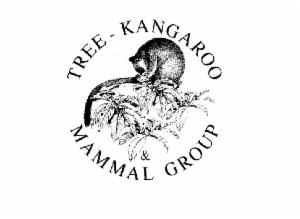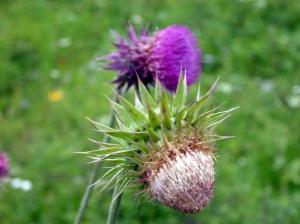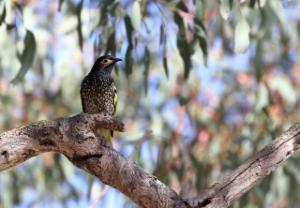Search for WENDLANDIA+SP.+(WINDSOR+TABLELAND+L.W.JESSUP +GJM1360) returned 389 results.
Refine results
Refine results
Section
- Locality (140)
- Species (132)
- Region (56)
- Common Name (34)
- Biodiversity Science project (10)
- Data resource (5)
- Site Page (5)
- Data provider (4)
- Institution (3)
Taxonomic rank
- Species (121)
- Variety (5)
- Subspecies (4)
- Genus (1)
- Unranked (1)
Image available
- Yes (52)
Lifeforms
- Molluscs (6)
- Insects and Spiders (5)
- Reptiles (2)
- Amphibians (1)
Taxonomic status
- Heteroptypic Synonym (53)
- Accepted (47)
- unreviewed (28)
- Synonym (2)
- Homotypic Synonym (1)
Conservation status in Australia
- Endangered (1)
- Vulnerable (1)
Conservation status in QLD
- Vulnerable (2)
- Endangered (1)
- Extinct in the wild (1)
- Near Threatened (1)
Conservation status in VIC
- Endangered (1)
-
Biodiversity Science project: Nassella Grass Invasion of Australasia
Tracking the spread of Nassella grasses in Australasia. Serrated tussock (N. trichotoma) and Chilean needle grass (N. neesiana) are strong invaders in tableland and mountain areas of Australasia. Other Nassella species are in lower numbers but have the potential for similar spread and impact, eg. Mexican feather grass (N. tenuissima).

-
Biodiversity Science project: Australian tree-kangaroo sightings
Citizen scientists, tourists, landowners and other interested parties submit photos, along with the location (gps, street address or locality name) they have taken of tree-kangaroos. These photos will be reviewed by experts in the field to confirm the species of tree-kangaroo photographed. This is part of a larger project involving surveys for tree-kangaroos in specific areas...

-
Biodiversity Science project: Big Bushfire BioBlitz- Washpool National Park
Join us in the Rainforests of the NSW north coast and tablelands (Washpool National Park) as we search for bugs, bats, birds and everything in between. We’re putting together an exciting line-up of experts to help point out amazing plants, animals, and fungi, explain how they fit into the ecosystem, the impact of the bushfires, and give you all kinds of tips and tricks to help you become a better naturalist!
-
Biodiversity Science project: Nodding thistle biocontrol
Carduus nutans Nodding thistle Nodding thistle is a annual or biennial herb that grows throughout Australia infesting around 1000 hectares of land in the tablelands of NSW, ACT, VIC and TAS. When infesting pastures, nodding thistle can quickly reduce stock and productivity as animals avoid grazing nodding thistle, allowing it to spread and outcompete desirable pasture plants...

-
Biodiversity Science project: CTLLS Woodland Birds on Farms Project
The 'Woodland Birds on Farms' project brings together species experts and the community to help the Regent Honeyeater and other declining woodland bird species survive in the Capertee Valley, Mudgee-Wollar and South-west Slopes Key Biodiversity Areas on the Central Tablelands...

-
Site Page: ALA in use: Research dogs helping to record data on threatened species – Atlas of Living Australia
Posted on 27th February 2019 The Research Dogs for Conservation program run by the University of the Sunshine Coast trains, tests and uses detection dogs for conservation projects and relies on the ALA to design surveys and manage data. Traditionally, detection dogs are used to detect and find the hidden or disguised. They’re used by defence forces to detect army explosives, the police force to detect drugs and weapons and search and rescue services to detect people lost or in distress...
-
Site Page: ALA in use: Dave Maynard, Environmental Consultant – Atlas of Living Australia
Posted on 2nd July 2018 We talk with an ecologist and environmental consultant, about how he uses the ALA to inform environmental impact assessments and offset planning for development projects. Dave Maynard, Principal Ecologist, NGH Environmental, in his ‘office’ on the Central Tablelands of New South Wales with the threatened Eucalyptus pulverulenta (Silver-leafed Mountain Gum)...
-
Site Page: Unlocking the mystery of the Regent Honeyeater – Atlas of Living Australia
Posted on 13th April 2021 A recent study by Ross Crates, a scientist at ANU’s Difficult Bird Research Group, explains why Regent Honeyeaters are changing their songs. More importantly, Ross wanted to find out what the change means for their future. Ross Crates in the field with an endangered Regent Honeyeater. Australia’s most endangered songbird Australia’s most threatened songbird, the Regent Honeyeater (Anthochaera (Xanthomyza) phrygia), is changing its bird call...
-
Site Page: ALA-cited publications – Atlas of Living Australia
Have you used the ALA in your published (or soon-to-be published) research? Please let us know about it via this form. We’re interested in all types of research that the ALA supports including research publications in scientific journals, reports, book chapters, theses, as well as websites and apps. Online bibliography This bibliography provides a list of known publications that have utilised data in the ALA or ALA infrastructure to support their research...